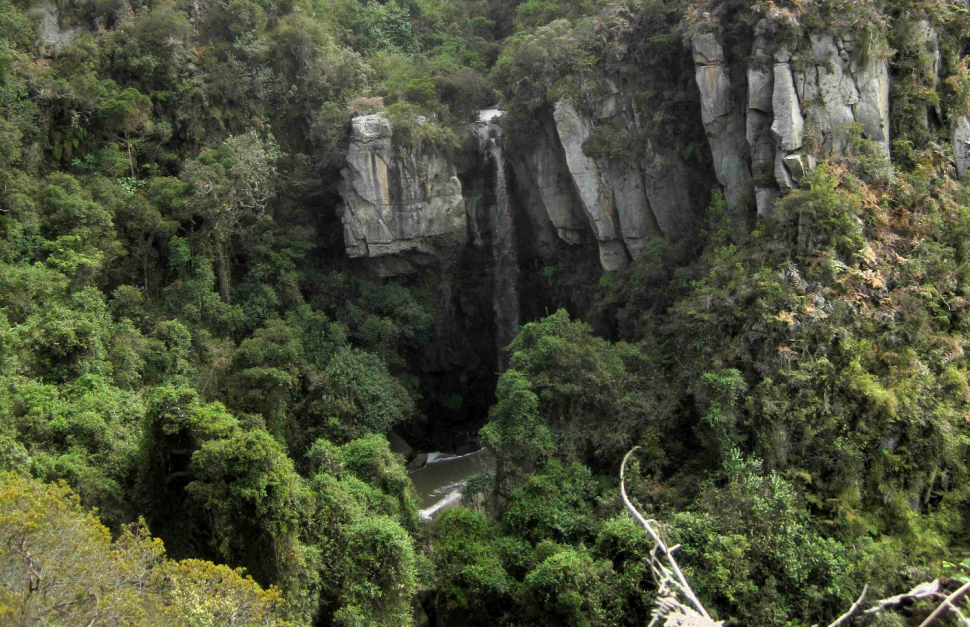For a change of pace, the Geo Ideas project has now relocated to Colombia! The geography, natural features, environmental issues, and the implications of those issues here in Colombia are all different from those concerning the springs of North Florida. What remains the same is that there are still places of natural beauty under threat from human encroachment and environmental degradation, and so during my time here, I intend to document these places and the issues facing them.
My first topic concerns some of the waterfalls surrounding Colombia’s capital, Bogotá. Waterfalls, of course, are beautiful to look at and often provide an enjoyable way to cool off under their cascades and the natural pools they form. More practically, as part of a longer river or stream, they are also part of a system that produces drinking water, and unfortunately, can collect effluent and other waste.
I observed this contradiction firsthand on a hike along the outskirts of Bogotá, in the foothills of a mountain range that form the city’s eastern border.
My first topic concerns some of the waterfalls surrounding Colombia’s capital, Bogotá. Waterfalls, of course, are beautiful to look at and often provide an enjoyable way to cool off under their cascades and the natural pools they form. More practically, as part of a longer river or stream, they are also part of a system that produces drinking water, and unfortunately, can collect effluent and other waste.
I observed this contradiction firsthand on a hike along the outskirts of Bogotá, in the foothills of a mountain range that form the city’s eastern border.
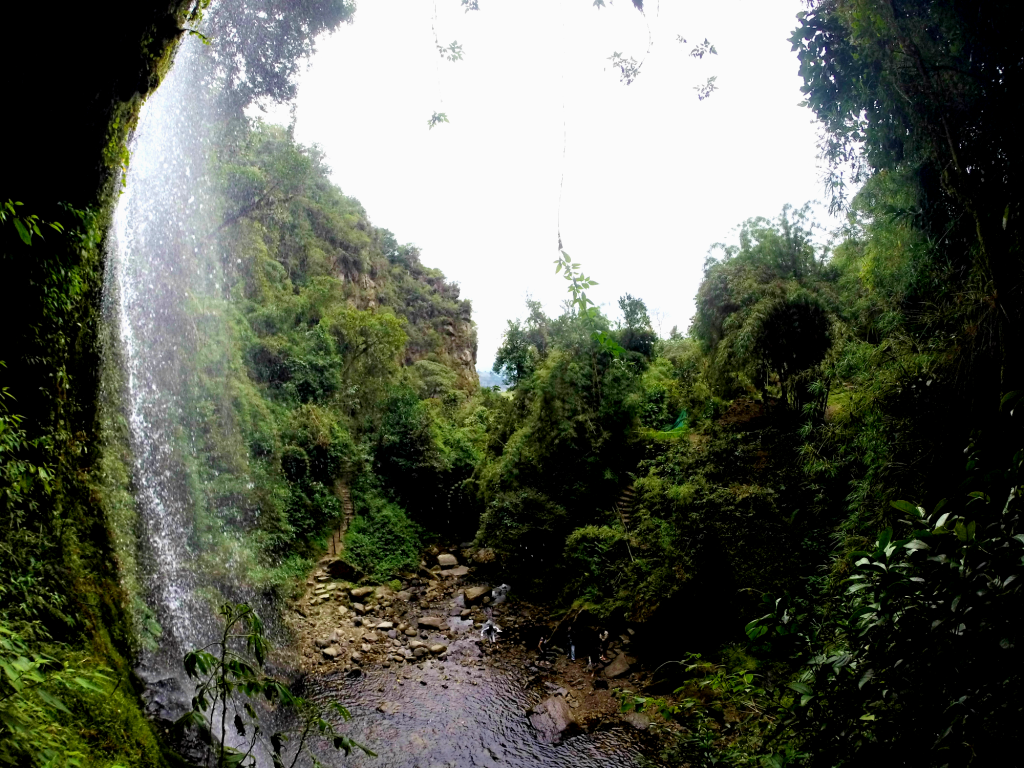
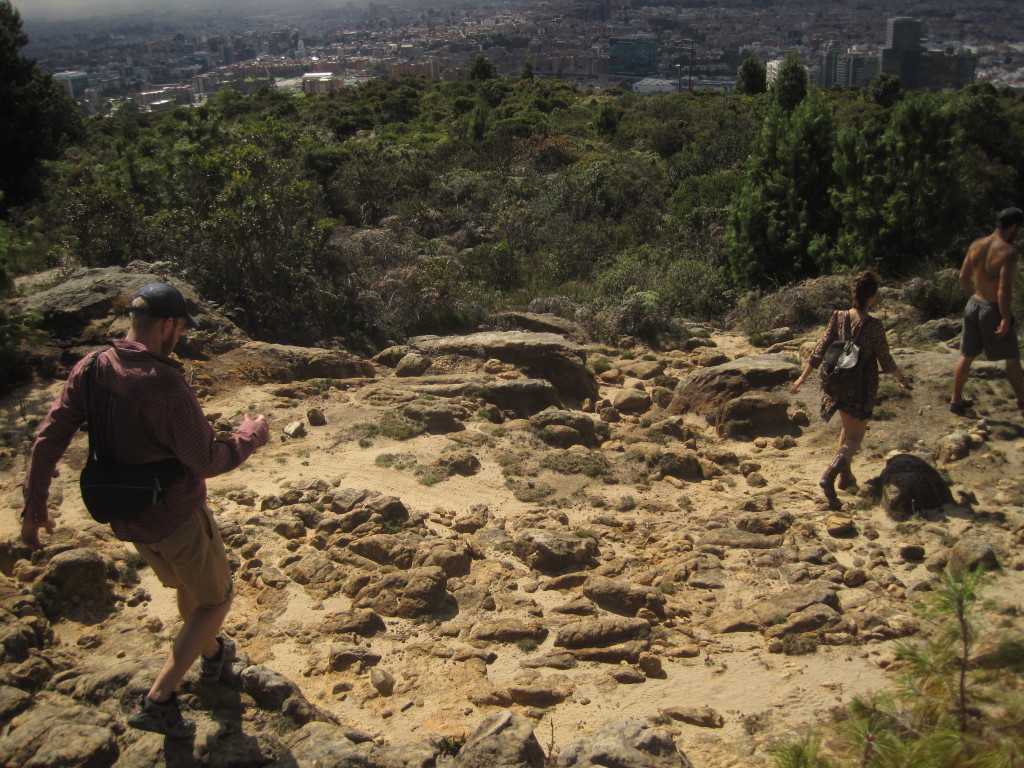
This was a walk that doesn’t appear in any of the guidebooks and I certainly didn’t expect a waterfall to appear through the scrubby vegetation. But there it was, a fine line of water cutting through the the rocky cliff face as it poured into the canyon below. A swim in the natural pool it formed was high on my mind as I carefully hiked/slid down the 70 or 80 degree incline to the bottom. These thoughts were quickly were put to rest as the smell of sewage began to fill my nostrils. Soap suds and detritus collected on the banks of the river that continued beyond the waterfall. Then I remembered, earlier along the trail, the shantytown houses at the top of a ravine that must have contained this river before it formed a waterfall. Given the probable lack of other options, this ravine provided a convenient receptacle for their residents’ waste.
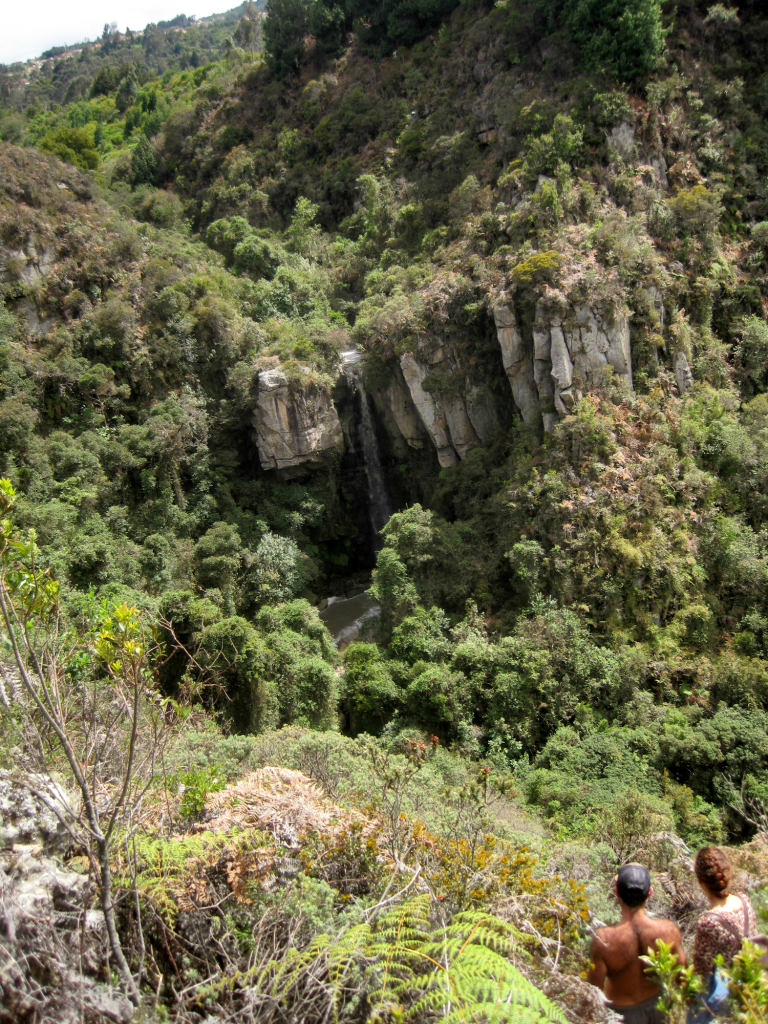
But who can blame them? I quickly realized that any environmental issue in Colombia is going to have a social dimension as well. A good start to solve the problem with this waterfall, of course, would be for the Colombian or Bogotano government to provide adequate sewage and trash collection for the people living upstream. But as in so much of Latin America, there are huge political and economic hurdles to climb for this to happen. When there isn’t even money to provide such services for everyone in Bogotá proper, the people on its outskirts are probably less than an afterthought.
This also makes conservation issues in the United States look simple by comparison. To use Florida’s springs as an example, we can easily afford to put regulations in place that would reduce poisoning nitrates, while putting restrictions on water use that would return the springs to a healthy flow, all while maintaining our comfortable first world lifestyles. So
why on earth don’t we?
I certainly wouldn’t want to give the impression that my new host country is a place of dirty waterfalls, and it isn’t. Just on the other side of Bogotá’s eastern mountains is a green, pastoral paradise where the biggest danger is being charged by an aggressive cow. In the leafy heights of a cloud forest, it’s also home to Colombia’s tallest waterfall, La Chorrera, at 590 meters (almost 2,000 feet). This is, however, a tiered drop, and not all 590 meters are visible from the bottom. And while the fine spray of La Chorrera hurtling over its clifftop was quite picturesque, there wasn’t much more to it than that – this is the end of a dry season, weakening this waterfall’s normally powerful flow.
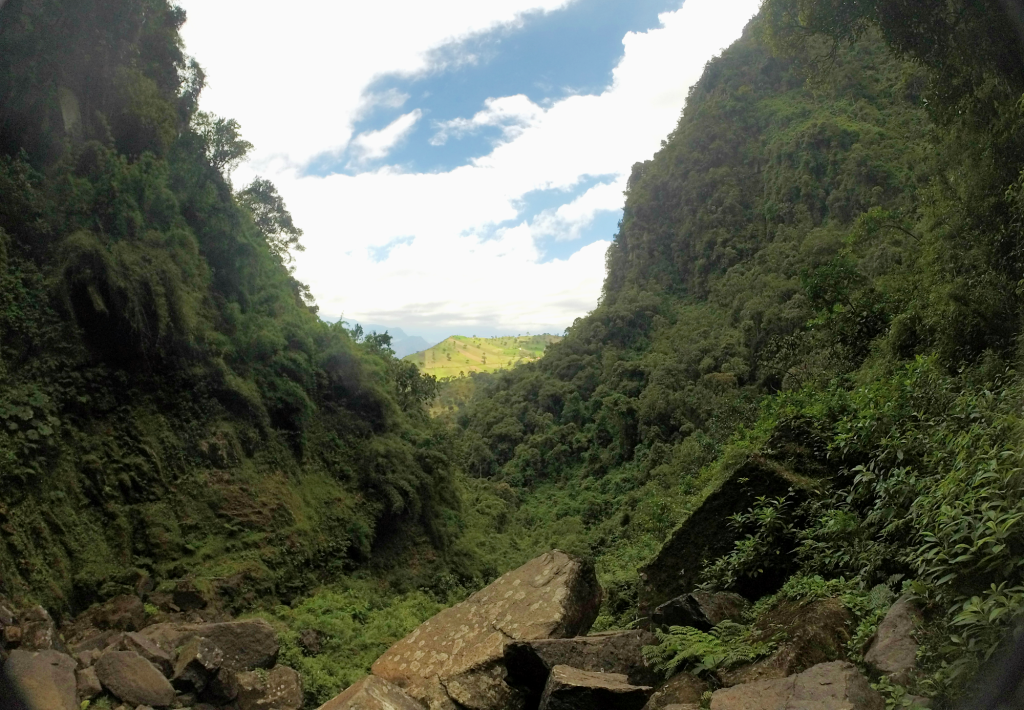
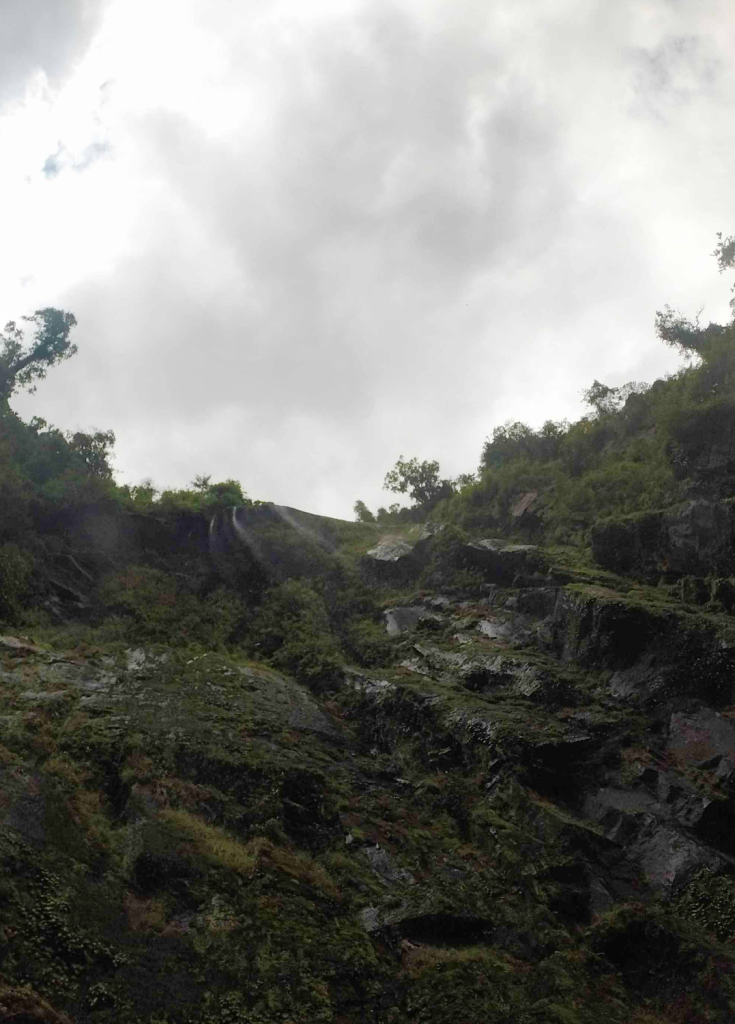
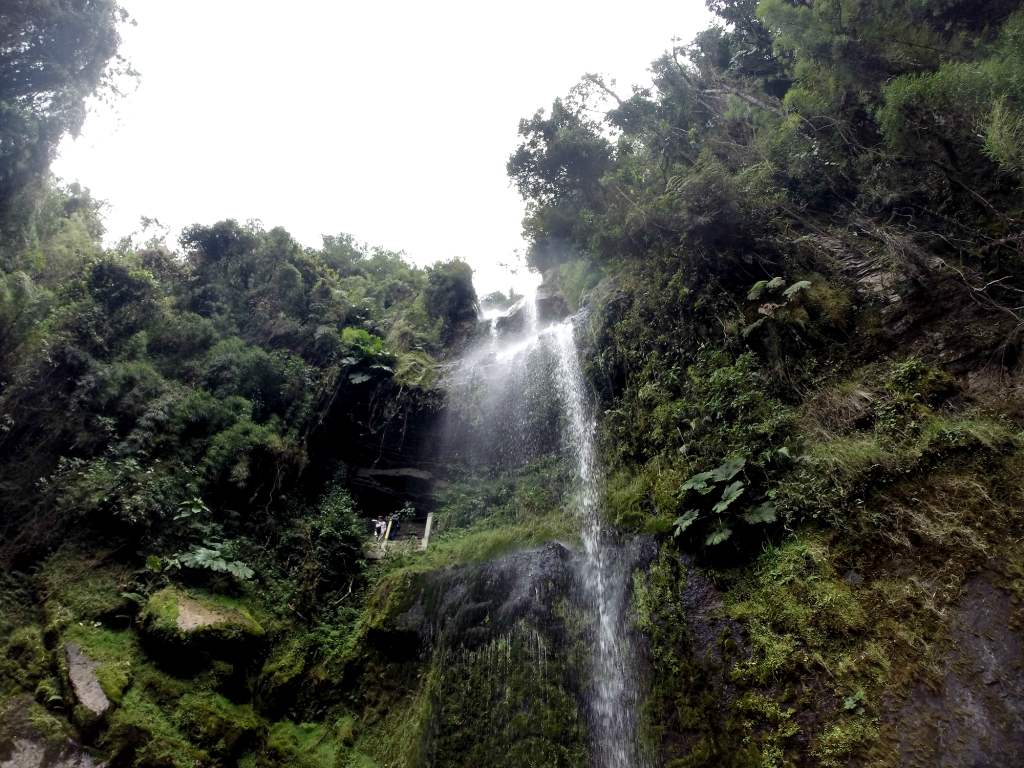
Nearby was a shorter waterfall with enough water for an icy shower in all seasons. Its name is “El Chiflon”, which I was told means “the spring” – as in, the kind of spring this blog has focused on – making for a neat little transition between conservation topics.
El Chiflon was as magnificent as the springs, too, forming a wide natural pool surrounded on all sides by dense forest. The cascade drops from enough height and with enough volume to provide a fire-hose level of pressure, making for a satisfyingly frigid jolt awake. Check it out below, and stay tuned for more conservation-focused field reports in Colombia and elsewhere!
El Chiflon Waterfall
Only a trickle from La Chorrera, highest waterfall in Colombia
La Chorrera’s waters normally pour forth from this heavily forested canyon to the pastures below
The walk to a “secret” waterfall, with the Bogotá skyline beyond
The waterfall. Note the steep descent to the bottom!
El Chiflon, a fantastic Colombian waterfall, and its natural pool beyond
Locations of the waterfalls
